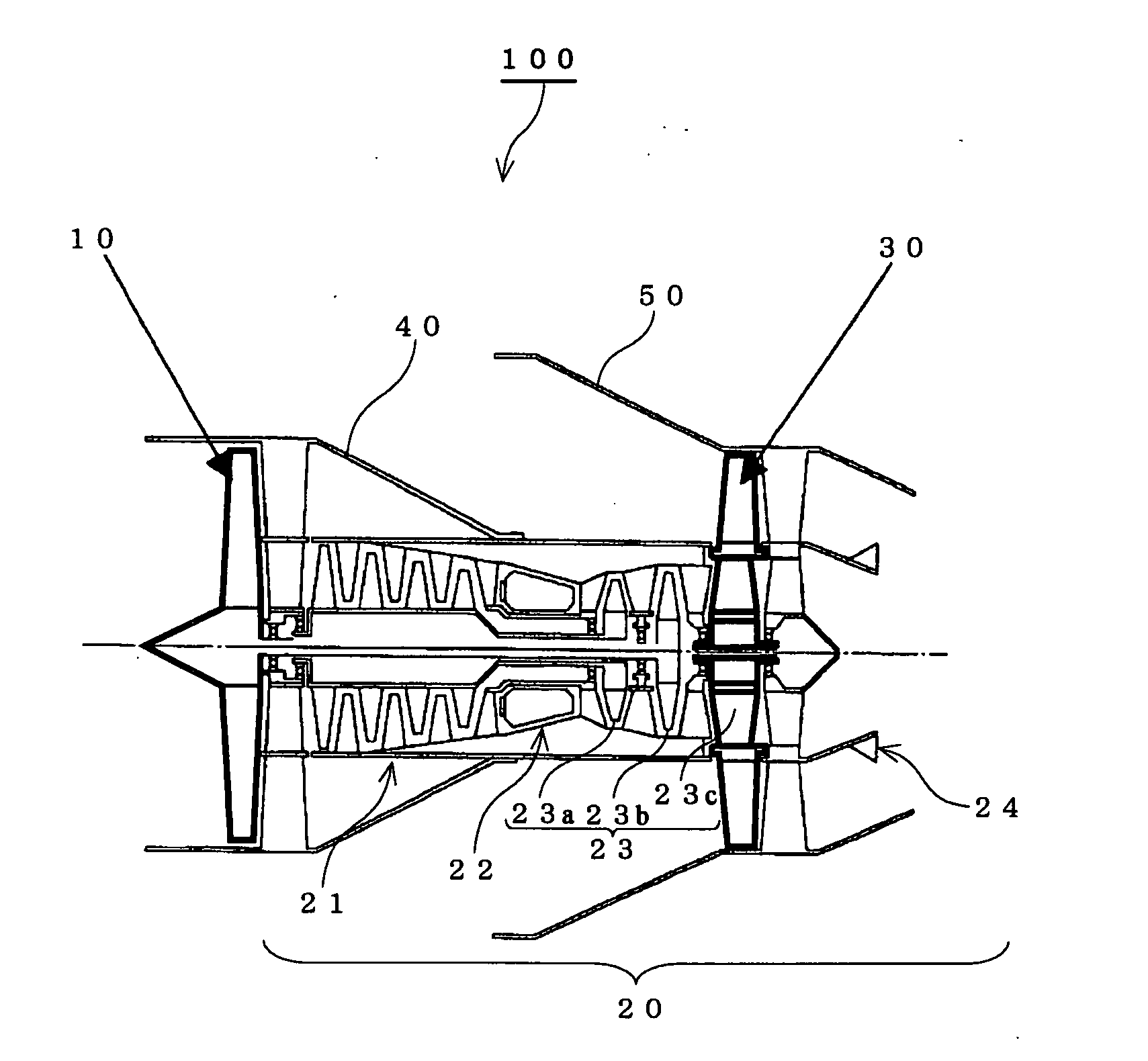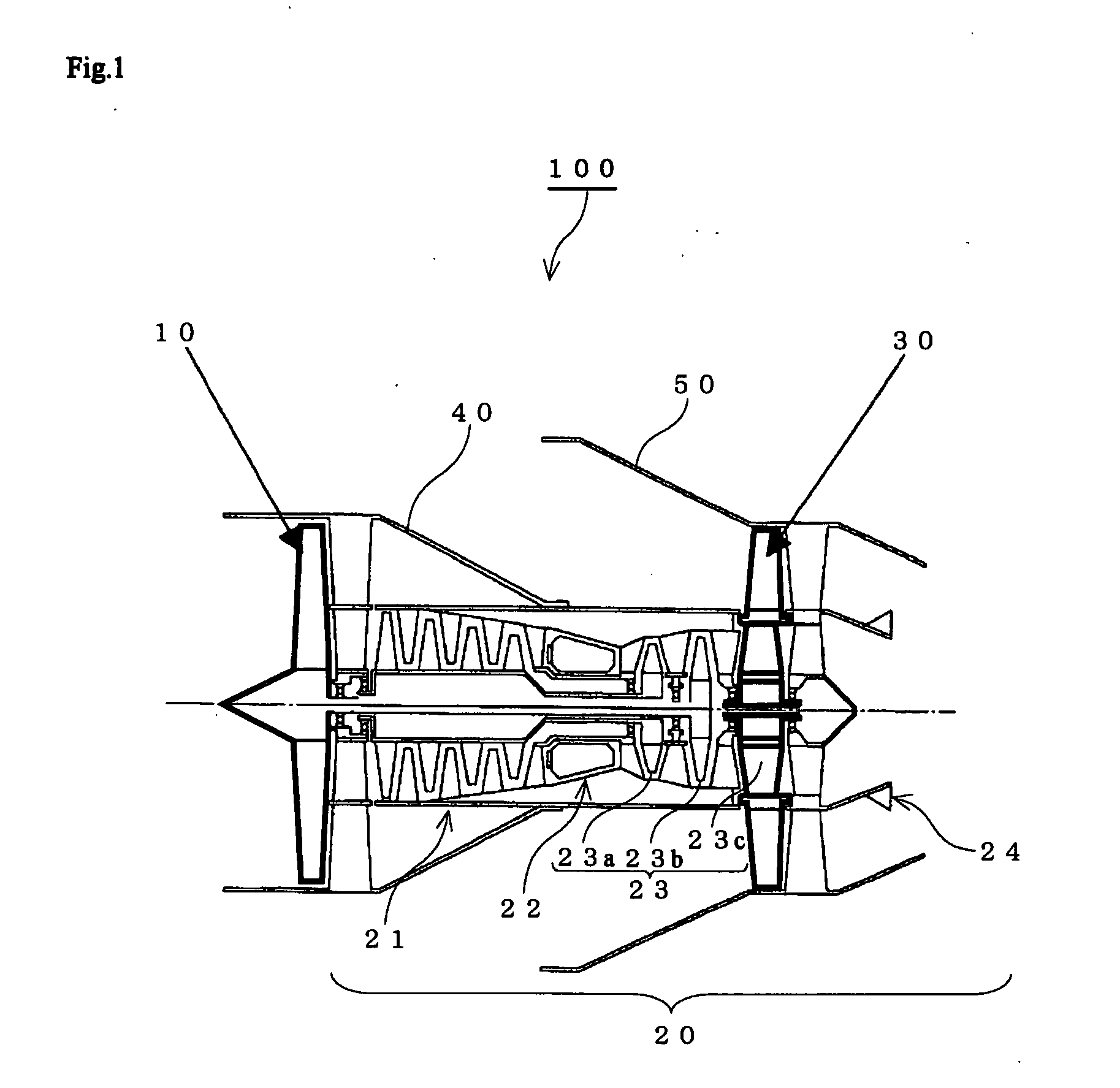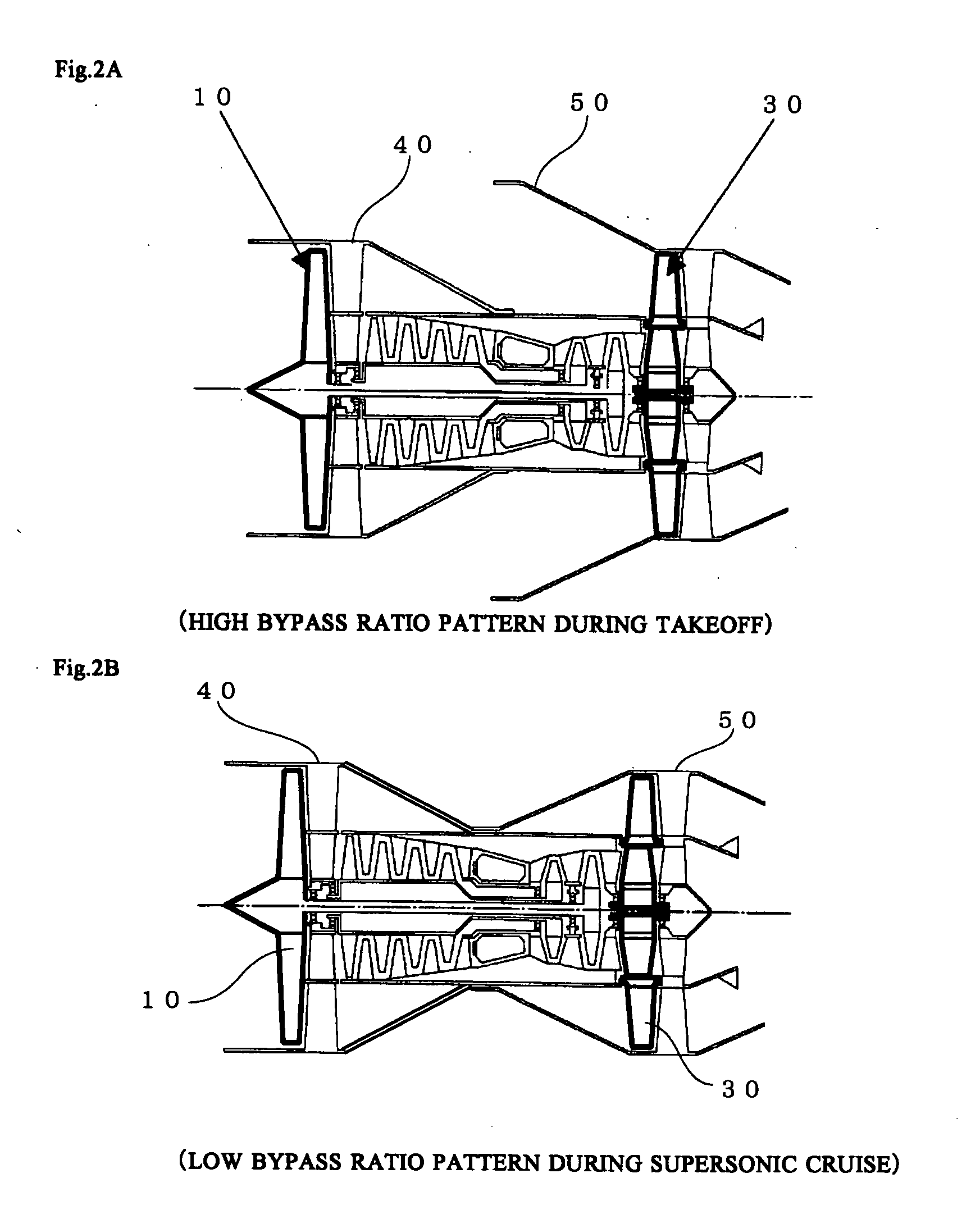Turbofan jet engine
a jet engine and turbocharger technology, applied in the direction of liquid fuel engines, machines/engines, efficient propulsion technologies, etc., can solve the problems of small frontal area of the engine, small supersonic wave drag, and the tendency of the above engine to make lower jet noise at takeoff, so as to reduce the exhaust velocity of the jet engine when generating the thrust required for takeoff and suppress the noise. , the effect of increasing the bypass ratio
- Summary
- Abstract
- Description
- Claims
- Application Information
AI Technical Summary
Benefits of technology
Problems solved by technology
Method used
Image
Examples
Embodiment Construction
[0027]FIG. 1 is an explanatory diagram showing a substantial cross-sectional portion of a turbofan jet engine 100 of the present invention.
[0028] This turbofan jet engine 100 comprises: a front fan 10 that compresses the inlet air and supply a part of the compressed air to a core engine 20 and ejects the remaining airflow to the bypass duct; a front fan duct 40 that accommodates the front fan 10; the core engine 20 constituted by a compressor 21, a combustor 22, a turbine 23 and an exhaust nozzle 24; an aft fan 30 that compresses the received airflow; and an aft fan duct 50 that accommodates the aft fan 30 and is designed to be rotatable.
[0029] The front fan 10 is driven by a low-pressure turbine 23b disposed behind a high-pressure turbine 23a. The compressor 21 is driven by the high-pressure turbine 23a.
[0030] The aft fan 30 is disposed on an end section of an outer circumference of a turbine 23c, and driven in complete synchronization with rotation of the turbine 23c.
[0031] Re...
PUM
 Login to View More
Login to View More Abstract
Description
Claims
Application Information
 Login to View More
Login to View More - R&D
- Intellectual Property
- Life Sciences
- Materials
- Tech Scout
- Unparalleled Data Quality
- Higher Quality Content
- 60% Fewer Hallucinations
Browse by: Latest US Patents, China's latest patents, Technical Efficacy Thesaurus, Application Domain, Technology Topic, Popular Technical Reports.
© 2025 PatSnap. All rights reserved.Legal|Privacy policy|Modern Slavery Act Transparency Statement|Sitemap|About US| Contact US: help@patsnap.com



